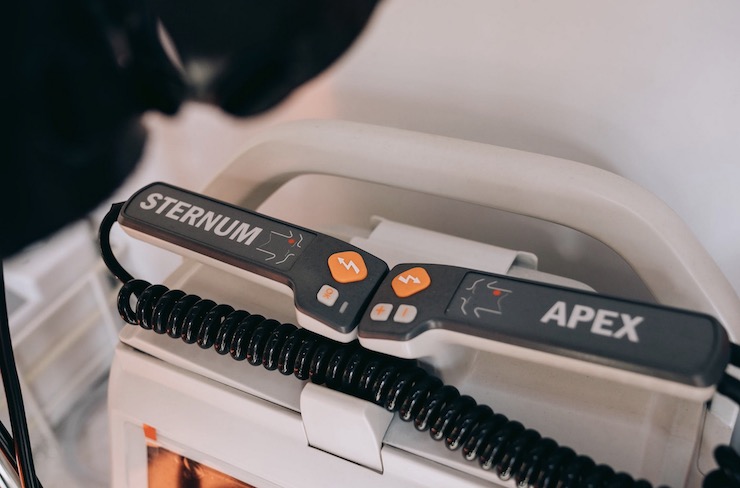
Medical experts say that fewer than 10% of sudden heart attack sufferers survive the event. The main reason is the lack of prompt medical attention, usually through CPR, aided by the use of a defibrillator. While a growing number of businesses and schools do make such devices readily available, time is of the essence. Unless heart attack victims receive resuscitation within roughly five minutes of the event, their chances of survival are slim.
Could drones help? A growing number of studies suggest that they might. Back in 2016, researchers in Sweden conducted a test of how quickly a drone might be able to transport a defibrillator to the scene of an out-of- hospital-cardiac arrest, or OHCA, compared to the arrival of an ambulance. The drone beat the ambulance nearly every time. Subsequent studies have estimated the time savings at 1-2 minutes, which might well make a life-saving difference. Studies have also found that those at the scene would be receptive to an arriving medical drone and could even be instructed remotely on how to use a defibrillator device.
In the United States, Duke University professor Monique Starks is the first investigator to be funded by the National Institutes of Health to explore development of a rapid-response drone system that would be capable of delivering automated external defibrillators (AEDs) to so-called OHCA “bystanders” in record time. Starks reviewed data collected across the 48 North Carolina counties and found that only 16% of cardiac arrests had a response time (from 911 call to AED arrival) of less than five minutes. When a first responder AED intervention was added, the percentage increased to 22.3%.
But what happened when drones equipped with defibrillators were dispatched to a cardiac arrest site in response to a 911 call? The percentage of OHCA bystanders receiving the devices within the critical five minute threshold was boosted nearly threefold – to 63%.
“We think equipping all first responders with AEDs is the low-hanging fruit. It’s a drop in the bucket compared with what drone technology could do,” she insists.
How many drones would be needed to do the job? Starks estimates five to eight drones for most cardiac arrest patients in most NC counties – but perhaps more in the busiest counties where the cardiac arrest rates are the highest.
“We really need to move from a static AED delivery model such as the traditional public access defibrillation (AEDs placed in businesses and government institutions) to dynamic delivery (on-demand AED delivery to bystanders),” she adds. “This is where we hope to go in the U.S.”
Starks and her colleagues are seeking additional NIH funding for pilot programs in the 48 North Carolina counties where her team has worked thus far. Her research is still in its infancy, she admits. Establishing the needed drone infrastructure and obtaining regulatory approval from the Federal Aviation Administration – for completety autonomous AED drone flights, especially – will take time, a few years at least.
But for the 350,000 Americans that continue to suffer sudden cardiac arrest annually with little hope of survival – and that rate has not changed measurably in four decades – life-saving medical drones may soon be coming to their rescue.
|